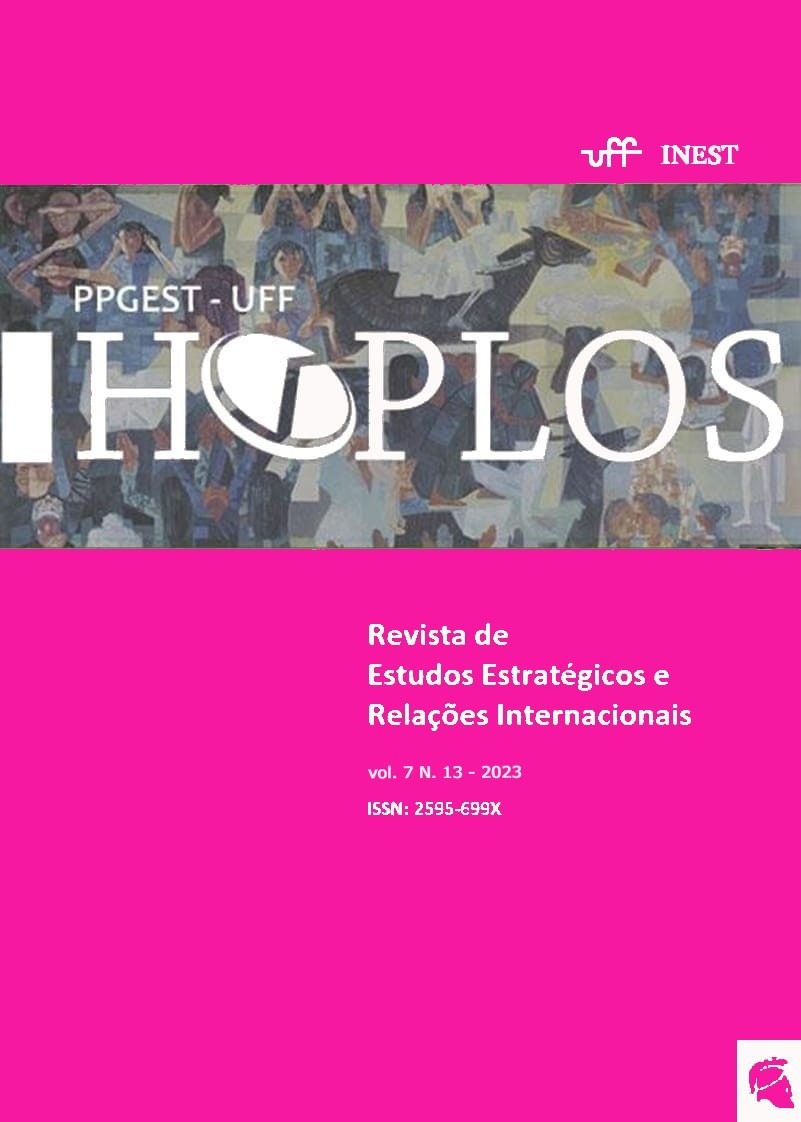THE E-RENMINBI AND THE MONETARY-FINANCIAL INTERNATIONAL SYSTEM IMPACTS OF THE CHINESE DIGITAL CURRENCY
Keywords:
E-Renminbi, Currency, China, StateAbstract
This article deals with the "e-Renminbi" (Chinese digital currency), its unit of account (yuan) and the discussions about the role of digital currency in the International Monetary-Financial System. The current debate on digital currencies focuses on private currencies - such as Bitcoin - in an attempt to decouple the state from the authority to issue currency. From a Chartalist, Keynesian and Minskyan perspective, we see currency as a creature of the state that depends on legal acceptance of the unit of account in which debts are generated, managed and settled. In this sense, the e-Renminbi, being a Central Bank Digital Currency (CBDC), is characterized only as another format of the formal Chinese currency (RMB), which therefore depends on the power of the issuing country (central authority) and which does not transform the content of the existing currency. However, as a digital token, the issuance of Chinese digital currency as a means of payment is absolutely innovative in terms of the process of clearing transactions, which reflects China's growing importance in the global economy.
Downloads
References
AGLIETTA, M. Money: 5,000 years of debt and power. New York: Verso, 2018.
AGLIETTA, Michel. Bai, Guo (2017). China’s 13th Five - Year Plan: In Pursuit of a “Moderately Prosperous Society”. Centre d’Etudes Prospectives et d’Informations Internationales (CEPII) Policy Brief No. 12.
BANK FOR INTERNATIONAL SETTLEMENTS (BIS). BIS Papers No 123. CBDCs in emerging market economies. Monetary and Economic Department, April 2022. Disponível em: https://www.bis.org/publ/bppdf/bispap123_e.pdf. Acesso em 17 de julho de 2023.
BOAVENTURA, Alba; NOGUEIRA, Isabela; DE CONTI, Bruno. A moeda digital chinesa: um confronto com o poder estrutural do dólar? Rev. Conj. Aust., v.14, n. 65, jan./mar. 2023, p.7-20. Disponível em: https://seer.ufrgs.br/index.php/ConjunturaAustral/article/view/127669. Acesso em: 21 de setembro 2023.
BURLAMAQUI, Leonardo; KATTEL, Rainer. Development Theory: Convergence, Catch-up or Leapfrogging and Finance? Anais do XLII Encontro Nacional de Economia [Proceedings of the 42nd Brazilian Economics Meeting] from ANPEC - Associação Nacional dos Centros de Pós-Graduação em Economia [Brazilian Association of Graduate Programs in Economics], 2016. Disponível em: https://www.anpec.org.br/encontro/2014/submissao/files_I/i6-34c146bd1f0ffddd06e7c83f1568f0b2.pdf. Acesso em: 21 de setembro 2023.
BURLAMAQUI, Leonardo. Schumpeter, the Entrepreneurial State and China. UCL Institute for Innovation and Public Purpose. Working Paper Series (IIPP WP 2020-15), 2020. Disponível em: Available at: https://www.ucl.ac.uk/bartlett/public-purpose/wp2020-15. Acesso em: 21 de setembro 2023.
CARSTENS, A. The future of money and the payment system: what role for central banks? Basel: Bank of International Settlements, 2019.
CARVALHO, Carlos Eduardo; PIRES, Desirée; ARTIOLI, Marcelo; DE OLIVEIRA, Giuliano. Cryptocurrencies: technology, initiatives of banks and central banks, and regulatory challenges. Economia e Sociedade, Campinas, v. 30, n. 2 (72), maio-julho 2021. p. 467-496. Disponível em: https://www.scielo.br/j/ecos/a/NFnZwKXNRvcvz8g65qFzWKG/?format=pdf. Acesso em: 21 de Set.2023.
CAUDEVILLA, Oriol; KIM, Henry M. The Digital Yuan and Cross-Border Payments: China's Rollout of Its Central Bank Digital Currency (August 2022). University of Hong Kong Faculty of Law Research Paper No. 2023/30. Disponível em SSRN: https://ssrn.com/abstract=4371414. Acesso em: 21 de Set.2023
CHINA DAILY. Report: 85% of users paid by scanning QR codes in 2020. Disponível em: https://global.chinadaily.com.cn/a/202102/02/WS6018c23ea31024ad0baa6b4c.html.
COINBASE. What is a Stablecoin? Disponível em: https://www.coinbase.com/learn/crypto-basics/what-is-a-stablecoin. Acesso em 25 de julho de 2023.
COHEN, Benjamin. Currency Statecraft: Monetary Rivalry and Geopolitical Ambition. London: University of Chicago Press, 2018.
FRITZ, B.; PAULA, L. F.; PRATES, D. M. Global currency hierarchy and national policy space: A framework for peripheral economies. European Journal of Economics and Economic Policies: Intervention, v. 15, n. 2, 2018, p. 208-218. Disponível em: https://www.lai.fu-berlin.de/homepages/fritz/publikationen/global-currency-hierarchy-and-national-policy-space.pdf. Acesso em: 21 de Set. 2023.
GILPIN, Robert. The political economy of the international relations. Princeton: Princeton
University Press, 1987.
HULD, Arendse. China Launches Digital Yuan App – All You Need to Know. China Briefing. September 22, 2022. Disponível em: https://www.china-briefing.com/news/china-launches-digital-yuan-app-what-you-need-to-know/. Acesso em 25 de julho de 2023.
KEYNES, J. Maynard. A treatise on Money. Edimburgo: R&R Clark Limited, 1935.
KNAPP, Georg F. The State Theory of Money. Londres: Macmillan & Company Limited, 1924.
KLEIN, Aaron. China’s Digital Payment Revolution. Brookings, 2021. Disponível em: https://www.brookings.edu/articles/chinas-digital-payments-revolution/.
MARRA, Ingrid. Criptomoedas e a centralidade estatal no sistema monetário internacional: um estudo comparativo. Trabalho de Conclusão de Curso (Graduação em Relações Internacionais) - Instituto de Relações Internacionais e Defesa (IRID), Universidade Federal do Rio de Janeiro, 2021.
MARTIN, Felix. Dinheiro: Uma biografia não autorizada. Portfolio-Penguin, São Paulo, 2016.
NOGUEIRA, Isabela. O Estado na China. OIKOS, v. 20, n. 1, 2021, p. 6-16. Disponível em: https://revistas.ufrj.br/index.php/oikos/article/view/52047. Acesso em: 21 de Set.2023
PEOPLE’S BANK OF CHINA. Working Group on E-CNY Research and Development Development of the People's Bank of China, 2021.
PERUFFO, Luiza; CUNHA, André;HAINES, Andrés. A moeda digital chinesa e o futuro do sistema monetário e financeiro internacional. Rev. Econ. Contemp., v. 26, n. 2022, p. 1-25, e222611. Disponível em: https://www.scielo.br/j/rec/a/HjSdZdrfcGs5YS5NptpQKrB/abstract/?lang=pt. Acesso em: 21 de Set.2023
PRATES, D. Beyond modern money theory: A post-Keynesian approach to the currency
hierarchy, monetary sovereignty, and policy space. Review of Keynesian Economics, v. 8,
n. 4, 2020, p. 494-511. Disponível em: https://ideas.repec.org/a/elg/rokejn/v8y2020i4p494-511.html. Acesso em: 21 de Set.2023
KINDLEBERGER, Charles. The world in depression, 1929-39. Berkeley: University of California Press, 1973
WEBER, Isabella. How China Escaped Shock Therapy: The market reform debate. New York: Routledge Studies on Chinese Economy, 2021.
YERMACK, D. Is bitcoin a real currency? An economic appraisal. Massachusetts: National Bureau of Economic Research, 2014. Disponível em: http://www.nber.org/papers/w19747.
XINHUA NEWS AGENCY. China leads race to become world's top cashless society, says British expert. Belt and Road Portal. Disponível em: https://eng.yidaiyilu.gov.cn/p/038BI18K.html.
Downloads
Published
How to Cite
Issue
Section
License
Copyright (c) 2023 Marina Moreno de Farias

This work is licensed under a Creative Commons Attribution-NonCommercial-ShareAlike 4.0 International License.
1. PROPOSTA DE POLÍTICA PARA PERIÓDICOS DE ACESSO LIVRE
Autores que publicam nesta revista concordam com os seguintes termos:
a. Autores mantém os direitos autorais e concedem à revista o direito de primeira publicação, com o trabalho simultaneamente licenciado sob a Licença Internacional Creative Commons Attribution - Share Alike 4.0 que permite o compartilhamento do trabalho com reconhecimento da autoria e publicação inicial nesta revista.
b. Autores têm autorização para assumir contratos adicionais separadamente, para distribuição não-exclusiva da versão do trabalho publicada nesta revista (ex.: publicar em repositório institucional ou como capítulo de livro), com reconhecimento de autoria e publicação inicial nesta revista.
c. Autores têm permissão e são estimulados a publicar e distribuir seu trabalho online (ex.: em repositórios institucionais ou na sua página pessoal) a qualquer ponto antes ou durante o processo editorial, já que isso pode gerar alterações produtivas, bem como aumentar o impacto e a citação do trabalho publicado (Veja O Efeito do Acesso Livre).








